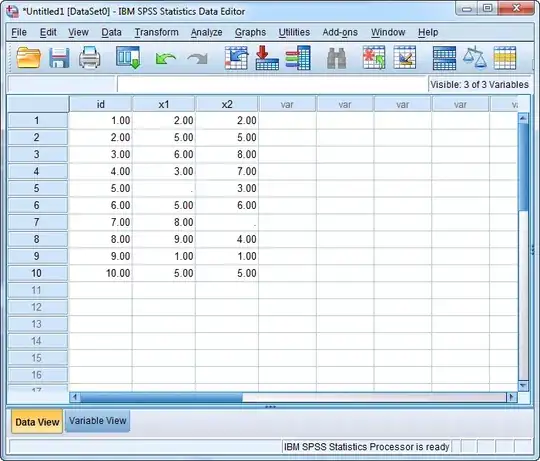I want to use k-means to cluster my data. I have broken one column into 4 dummy variables and I have normalized all of the data to mean=0 and sd=1. Will k-means work with these dummy variables?
I have run the k-means in R and the results look pretty good, but are much more dependent on the value of these dummy variables than the rest of the data. My 'between_SS / total_ss' = 58%
Data Sample:
num_months, sales, dummy_a, dummy_b, dummy_c, dummy_d
10, 102.33, 1, 0, 0, 0
5.7, 57.5, 0, 0, 0, 1
21.3, 152.88, 0, 1, 0, 0
Code:
library("ggplot2")
library("scatterplot3d")
mydata <- read.csv("data.csv", stringsAsFactors = FALSE)
data <- scale(data)
km <- kmeans(data, 4) #Break into 4 clusters
##...combine the dummy variables into 1 field so I can use it as the 3rd dimension to graph it
results$color[results$cluster1==1] <- "red"
results$color[results$cluster2==1] <- "blue"
results$color[results$cluster3==1] <- "green"
results$color[results$cluster4==1] <- "orange"
with(results, {
s3d <- scatterplot3d(num_months, sales, dummy_combined,
color=color, pch=19)
s3d.coords <- s3d$xyz.convert(num_months, sales, dummy_combined)
})
edit: Here is some code for my comment below. It uses kmeans to cluster 3-dimensional data, 2 of which are binary data. It looks like it does a fine job clustering.
seed(2015)
v1 <- c(runif(500, min = -10, -5), runif(500, min = 5, 10))
v2 <- round(runif(1000, min=0, max=1))
v3 <- round(runif(1000, min=0, max=1))
v1 <- scale(v1)
v2 <- scale(v2)
v3 <- scale(v3)
mat <- matrix(c(v1,v2),nrow=length(v1))
k <- kmeans(mat,4)
plot3d(v1, v2, v3, size=7, col = k$cluster)
